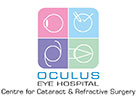- August 19, 2020
- Posted by: ohadmin
- Category: Eye

What is Glaucoma?
Glaucoma is an eye disease, where the fluid pressure within your eye increases and damages the delicate fibers of the optic nerve. These delicate nerve fibers are responsible for carrying visual impulses from your eye to the brain. This damage is irreversible and can lead to blindness in advanced cases. It has been labeled as “lurking thief of vision”.
Glaucoma is the second leading cause of blindness in the world with 70 to 150 million people affected worldwide (WHO).
In India, glaucoma is the leading cause of irreversible blindness with at least 12 million people affected, and nearly 1.20 million people blind from the disease. More than 90% of cases of glaucoma remain undiagnosed in the community.

Why it is important to know about Glaucoma?
Glaucoma causes damage which is preventable but not totally curable. It is, therefore, necessary that the disease should be detected and treated at its earliest stage to prevent blindness. Many patients do not have any symptoms in the early stages.
How does a person come to know that he/she is suffering from Glaucoma?

The disease can develop slowly and one may not even be aware of the gradual loss of sight until very late in the disease when your vision is seriously affected. Unfortunately, most cases of glaucoma do not occur with readily noticeable symptoms that warn of the irreversible optic nerve damage being done. However, the presence of the following warning signs indicates that you need a thorough examination by an eye doctor.
- Unusual trouble adjusting to dark rooms
- Difficulty focusing on near or distance objects
- Unusual sensitivity to light or glare
- Change in color of the iris
The following symptoms require emergency medical attention.
- Sudden loss of vision in one eye
- Sudden hazy or blurred vision
- Halos or rainbows around light
Which age does glaucoma affect?
Glaucoma is most common above the age of 40 years. It may affect any age group. A special type of glaucoma called congenital glaucoma may affect even a newborn or a child.
Who all are at high risk of developing glaucoma?
Any person over age 40
The risk is higher for –
- A person with diabetes
- A person who has a family member with glaucoma
- A person with thyroid disease
- A person on long term steroid therapy for other diseases such as asthma, arthritis, etc.
- A person who has had a previous eye injury or surgery.
What are the types of glaucoma in adults?
There are two main types of glaucoma which are seen in adults.
- Chronic Glaucoma or open-angle Glaucoma
- Acute Glaucoma or closed-angle glaucoma
Difference between open-angle glaucoma and closed-angle glaucoma?
Open-angle glaucoma the most common form of glaucoma accounting for at least 90% of all glaucoma cases. “Open-angle” means that the angle where the iris meets the cornea is as wide open as it should be. Open-angle glaucoma is also called primary or chronic glaucoma
Angle-closure glaucoma, a less common form of glaucoma. It has a closed or narrow-angle between the iris and cornea. It develops very quickly and is caused by blocked drainage canals, resulting in a sudden rise in intraocular pressure. It also called acute glaucoma or narrow-angle glaucoma.
 How is glaucoma treated?
How is glaucoma treated?
- Medicines
- Laser surgery
- Operative surgery
Dr. Jagruti Desai ( M.S. Ophthalmology )

Oculus eye hospital
Tel. 9820094152, 9819983158